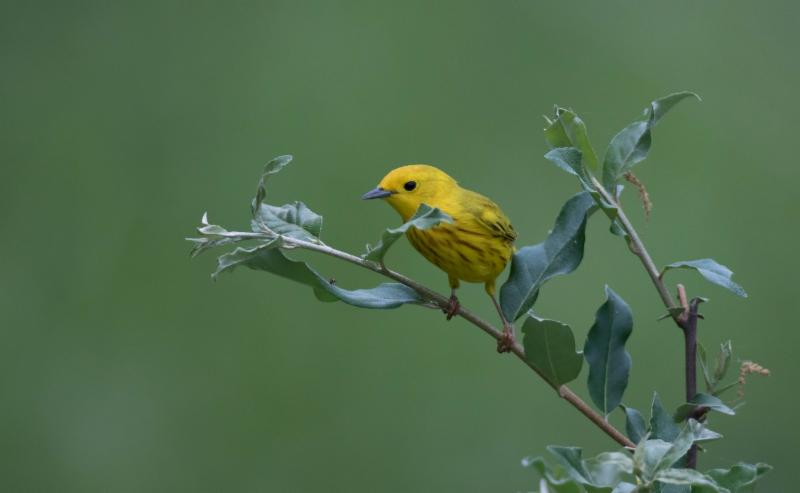Zinke's Decision Rooted in Science, Sense
By Charles S. Potter, Jr./McGraw
Photo by Jim Culp/flickr
Last week, U.S. Interior Secretary Ryan Zinke did something none of his predecessors has been willing to do when it comes to increasing the breeding populations of ducks and ground-nesting birds on the American prairies.
Zinke listened to the science and overwhelming data--not the entrenched interests who for too long have had an outsized influence at Interior and the U.S. Fish & Wildlife Service-and
announced
that predator management would become part of programs designed to increase duck populations. This is a seismic shift that will greatly benefit ducks and other birds that try to bring off their brood on a landscape radically altered from that in which they evolved.
For more than 50 years, the best waterfowl scientists contended predators such as fox, raccoon and skunk - were eating most of the duck eggs before they could hatch. These predators were not native to the landscape; they set up house in the region as a result of man's influence. In the case of foxes, they not only ate the eggs but often the nesting hen as well.
The establishment in Washington ignored these facts.
|
|
Listen:
Charlie Potter, Stan Gehrt on Urban Wildlife
McGraw photo
McGraw
President and CEO Charlie Potter recently welcomed Dr. Stan Gehrt, director of the McGraw Center for Wildlife Research and Fisheries Management, to "The Great Outdoors," his weekly show on WGN Radio.
They discussed Dr. Gehrt's recent trip to France, where he spoke about coyotes and other larger carnivores, as well as the state of wildlife in the Chicago metropolitan area.
|
The Lessons that Hurricanes Can Teach Us
By Chris Macaluso/TRCP
Photo by kakela/flickr
My lifelong home in South Louisiana has borne the brunt of more than a dozen hurricanes over the last 40 years. Each of them brought flooding rains, heavy winds, and storm surges that inundated coastal communities. Some of them, like Hurricanes Katrina and Rita, reshaped cities and lives forever.
This is why it's especially tough to see the devastation from Hurricanes Harvey and Irma affect friends, colleagues, and the places they call home. I've been there before-so have my friends and neighbors. We know it could just as easily be us gutting our homes, wondering when our roads will be passable, and struggling with seemingly endless power outages.
We understand the weeks, months, and maybe years of struggle ahead. The incredibly generous outpouring of support from fellow Americans, in the form of financial donations, volunteer hours, food, and water is critical to stabilizing the situation and beginning to rebuild. But anybody who has lived through such devastation knows only time, determination, and hard work will truly bring back a sense of normalcy for those in the paths of Harvey and Irma.
|

A Little Bird's Long and Remarkable Migration
By Max Witynski/Cornell
Photo by budgora/flickr
On June 24, 2017, researchers from the Cornell Lab of Ornithology in Ithaca, New York, caught a Yellow Warbler in their nets. As they prepared to put an identifying band on the bird's leg, they noticed something very unusual: the bird already had one.
The warbler was a breeding male that had been momentarily interrupted from defending his territory among the short willow trees lining a nearby pond. The last time he'd been caught, just 2 months earlier, he had been fattening up for spring migration-2,300 miles away in northern Colombia, South America. What were the chances of flying one-third of the distance between the equator and the North Pole only to fall into the hands of ornithologists once again?
The chances are, in fact, very small, which meant that the researchers (perhaps unlike the bird) were ecstatic. Catching a previously banded bird is almost like winning the lottery-it happens so rarely. This band recovery was the first between North and South America for a Yellow Warbler, despite the fact that more than 130,000 of them have been banded in northeastern North America alone in the last few decades.
|

Bottom Line: Defending Hunting's Economics
By Steven Rinella/MeatEater
Photo by budgora/flickr
Passionate, outspoken hunters sometimes find themselves caught up in arguments with non-hunters about the ethical and cultural merits of hunting. Whether these challenges to our practices take the form of emotionally charged attacks or legitimate questions concerning hunting's value as a wildlife management tool, we tend to use the same handful of arguments to support the hunting lifestyle.
Most hunters are familiar with the most common of these: We bring balance to animal populations that, if left unchecked, might fluctuate wildly due to disease or starvation; we source healthy, organic food from game animals; we maintain family traditions; and we engage in active conservation efforts that benefit all wildlife and the environment as a whole. All of these examples are, at times, worthwhile arguments in favor of hunting. But one of the most compelling and effective ways to prove hunting is a necessary and important part of our culture is to explain its value in actual dollars and cents.
|
|
|
|
|
|